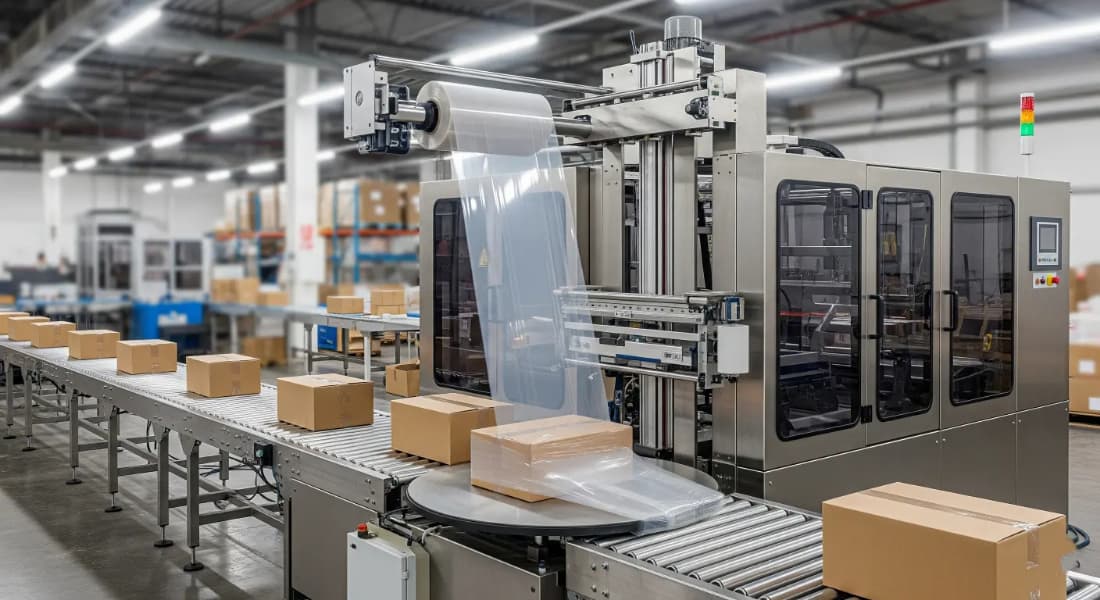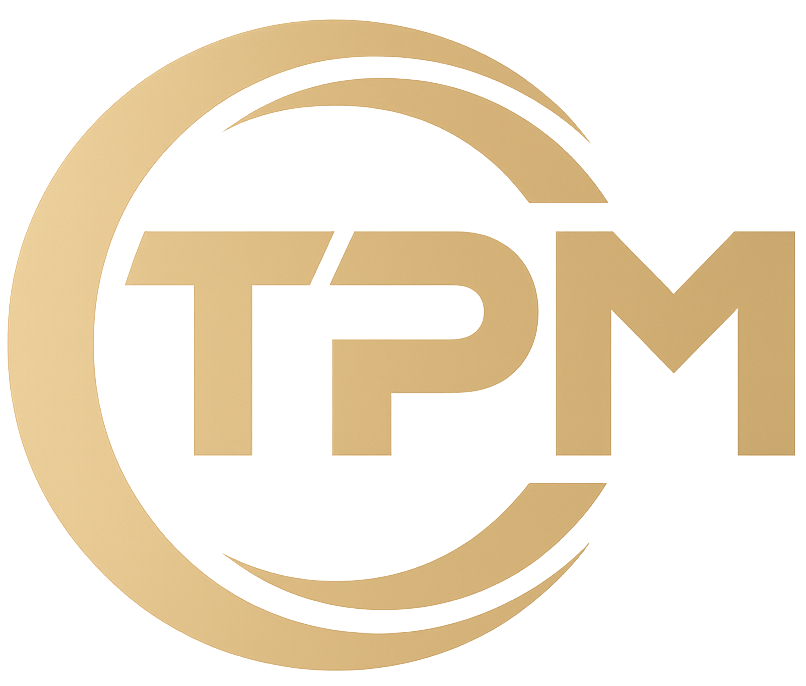Stretch Film | A Reliable Solution for Packaging and Transport
Stretch films with high flexibility and adhesion, ideal for protection and load stabilization.
Table of Contents

What is Stretch Film? Stretch films are a type of flexible plastic material widely used for packaging and protecting products. These films have the ability to stretch and return to their original form, tightly wrapping around items for secure packaging. Thanks to this property, products remain well-protected during storage, shipping, and long-distance transportation.
They are usually made from polyethylene materials and are available in various thicknesses and lengths. Depending on the application, stretch films can be applied manually or with industrial packaging machines.
Due to their high flexibility, stretch films can wrap around irregular-shaped packages without requiring additional fillers. This makes them an efficient and economical packaging solution for a wide range of industries.
Features and Benefits of Stretch Films
Difference from Other Packaging Films
Compared to traditional polyethylene wraps or shrink films, stretch films offer greater flexibility and elasticity. They tightly hold items together, preventing movement during transit and creating a neat, wrinkle-free package. Because of their elasticity, stretch films are suitable for products with varying shapes and sizes.
Shrink films, on the other hand, require heat for application, which increases energy consumption. Stretch films, however, do not require heat, making them faster, safer, and more cost-efficient. For this reason, stretch films have become the preferred choice in industrial production and export packaging lines.
In addition, stretch films can be reused in certain applications and are partially recyclable. This makes them not only cost-effective but also environmentally friendly, which is especially valuable for export companies that must comply with global sustainability standards.
Common Applications Across Industries
Stretch films are used in various industries such as food, pharmaceuticals, retail, and heavy industry. For smaller packages, manual stretch film is commonly applied, while for heavy or bulky items, machine stretch film is the preferred option due to its strength.
In export industries, stretch films provide reliable protection during transportation. Products stored in containers or trucks remain stable and secure, minimizing the risk of damage and ensuring customer satisfaction.
In warehouses and retail, stretch films are used for palletizing multiple items together, protecting goods from dust, dirt, and moisture. This versatility makes stretch films an essential part of modern supply chains.
Strength and Tensile Resistance
High-quality stretch films are manufactured with special formulations that provide excellent tensile strength. This means they can be stretched without tearing, holding products firmly in place even during long-distance transport and harsh storage conditions.
The superior resistance of stretch films helps absorb shocks and impacts during handling, reducing product damage and minimizing costly losses. For industries where safety and reliability are critical—such as exports—this feature is especially important.
Multi-layer applications of stretch films further improve stability, keeping pallets secure and reducing the risk of slipping or collapsing during shipping. For these reasons, tensile strength is one of the key factors businesses consider when choosing industrial-grade stretch films.

Advantages of Using Stretch Films
Cost and Material Savings
One of the major benefits of stretch film is its ability to reduce packaging material usage. Thanks to its stretchability, it provides full coverage with less material, eliminating the need for additional fillers or multiple layers of plastic.
This efficiency leads to significant cost savings, especially in large-scale packaging and palletizing operations. Businesses can maintain packaging quality while reducing overall operating expenses.
By optimizing material use, stretch film contributes to better production efficiency and improved cost management.
Protection During Transportation
Stretch film tightly secures items together, preventing shifting, falling, or damage during transit. Even irregular-shaped packages or multiple stacked boxes remain stable and safe.
It also protects goods from moisture, dust, and external impacts, which is vital for long-distance transport and export logistics. This reduces financial losses and ensures goods arrive in perfect condition.
Furthermore, stretch film eliminates the need for excessive strapping or additional protective materials, simplifying the shipping process.
Increased Efficiency in Packaging
Using stretch film in packaging lines speeds up the entire process. Its flexibility allows workers or machines to secure goods quickly, minimizing downtime and improving workflow.
Stretch film reduces the need for extra labor and enables full automation in larger industries, cutting operational costs while boosting productivity.
This streamlined packaging process also reduces errors and product damage, leading to higher-quality results and improved customer satisfaction.

Types of Stretch Films
Hand Stretch Film
Hand stretch film is designed for manual use, making it ideal for small businesses, retail stores, and limited packaging needs. Workers can easily apply it by hand to wrap lightweight and medium-sized items.
It allows flexibility in application, as the user can control tension and coverage based on product requirements. This ensures secure packaging while reducing waste.
Hand stretch films are cost-effective, easy to replace, and practical for everyday use in warehouses and shops.
Machine Stretch Film
Machine stretch film is designed for use in automated packaging systems, significantly increasing efficiency and speed. These films are stronger, more consistent, and capable of wrapping heavy loads securely.
They are ideal for palletizing in large industries, especially for exports and long-haul shipments where load stability is critical.
By reducing packaging time and improving consistency, machine stretch films ensure higher productivity and lower costs in industrial operations.
Cling Stretch Film
Cling stretch films are self-adhering, meaning they stick to themselves without the need for additional adhesives. This property enhances load stability and minimizes slippage during transport or storage.
They are particularly useful for delicate products or shipments that require extra stability.
Cling films not only improve security but also enhance the appearance of the final packaging, making them a popular choice in both domestic and export markets.

Key Factors in Choosing Stretch Film
Thickness and Strength
Choosing the right film thickness is essential. Thicker films are more suitable for heavy loads, while thinner ones are sufficient for lighter goods. Using the wrong thickness can result in wasted material or insufficient protection.
Durable films provide both elasticity and strength, ensuring secure packaging for export goods. They also resist damage from environmental factors such as dust, humidity, and temperature changes, which is crucial for long-haul shipping.
Selecting the right thickness increases durability, reduces waste, and minimizes replacement costs, offering businesses long-term savings.
Product Compatibility
The type and shape of products play an important role in film selection. Fragile goods require films with higher cling and flexibility, while heavy or irregular items demand stronger, thicker stretch films for maximum security.
Using the wrong film can lead to product damage, increased waste, and reduced packaging efficiency. Businesses must consider product type, shipping conditions, and storage environments when choosing the right film.
Additionally, specialty stretch films with UV resistance or moisture protection are available for sensitive products, ensuring better preservation and extended packaging lifespan.
Application in Manual and Automatic Lines
Industrial stretch films are specifically designed for automated lines, allowing faster, more efficient, and error-free packaging. They are ideal for heavy-duty use, especially in high-volume production.
Manual stretch films, however, are perfect for smaller businesses or environments where automation is not feasible. They offer flexibility and precision, allowing operators to create secure and stable packaging by hand.
Proper training in film application reduces errors, enhances efficiency, and ensures high-quality results across both manual and automated operations.
Frequently Asked Questions (FAQ)
How many times can stretch film be reused?
Stretch film is typically single-use, but certain industrial-grade films with higher thickness can be reused. For export and critical shipments, however, using fresh, high-quality film is always recommended.
Is stretch film suitable for heavy products?
Yes. Industrial stretch films are specifically designed for heavy loads, providing excellent strength and stability for pallets and bulk goods.
What is the difference between hand stretch film and machine stretch film?
Hand stretch films are designed for manual application and lighter packaging, while machine stretch films are stronger, faster, and designed for industrial packaging lines.
How do I choose the right film thickness?
The right thickness depends on the weight, size, and fragility of the products. Thin films suit light goods, while thick films are necessary for heavy loads to prevent tearing and damage.
Is stretch film eco-friendly?
Stretch films are partially recyclable, helping reduce plastic waste. Choosing recyclable and high-quality stretch films supports sustainability goals and minimizes environmental impact.
